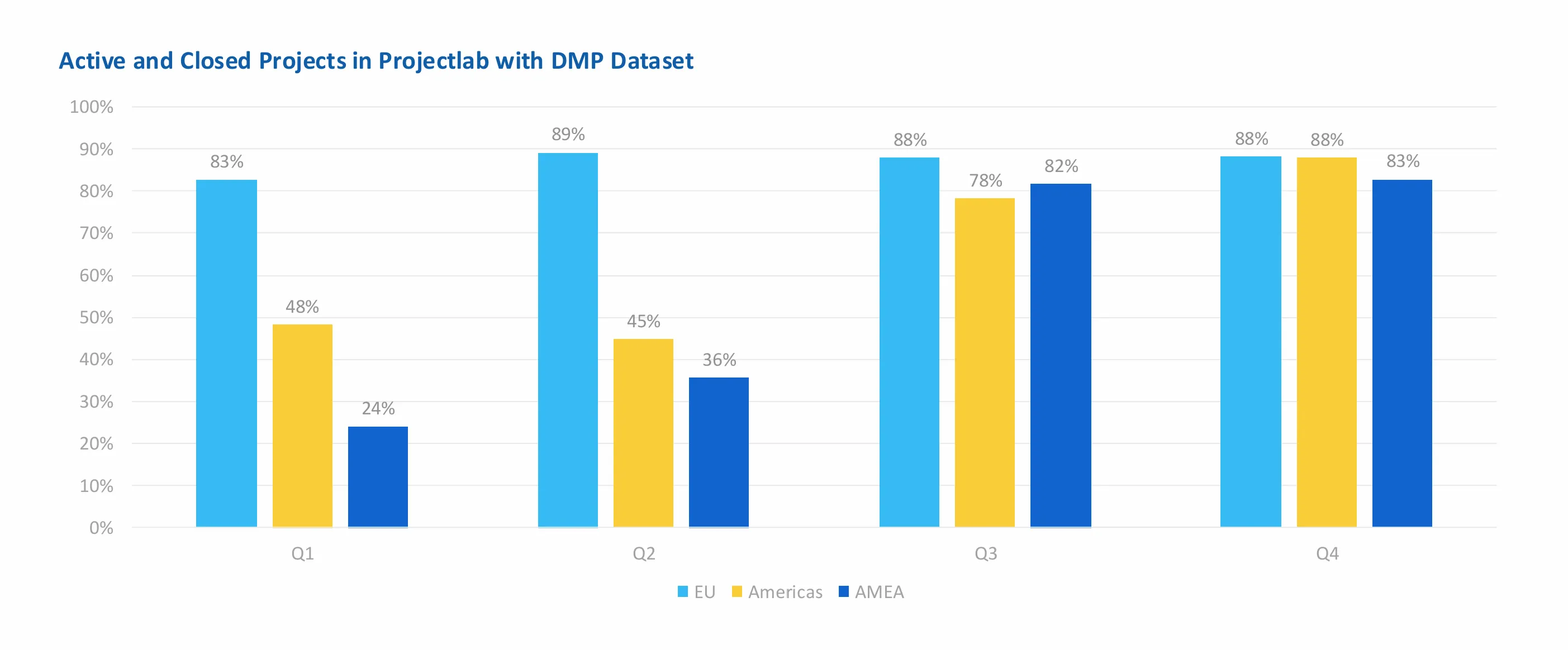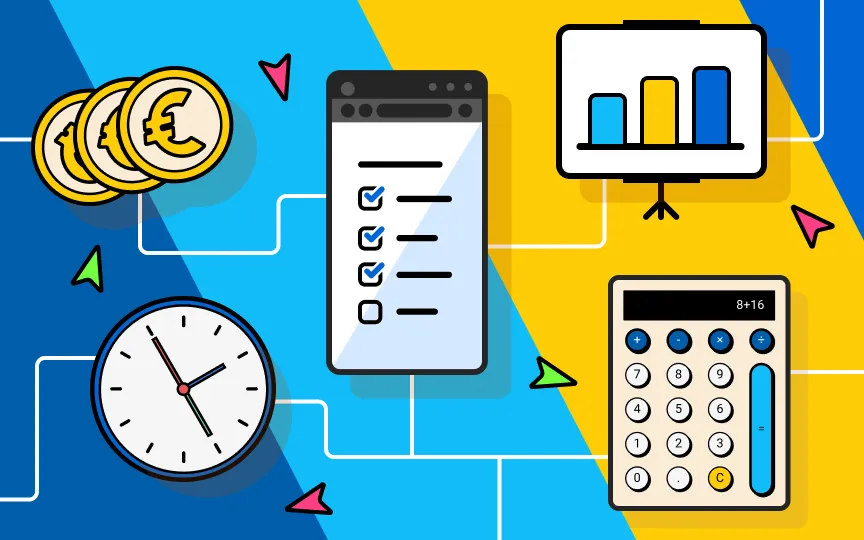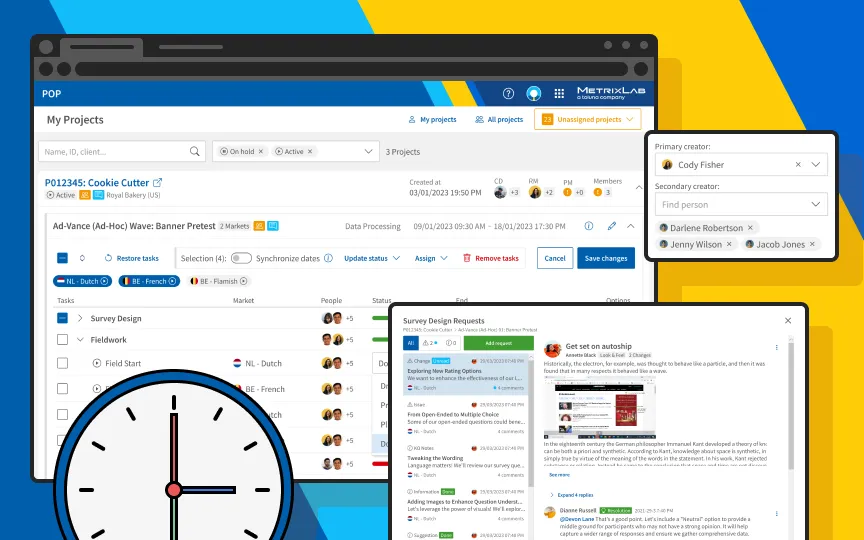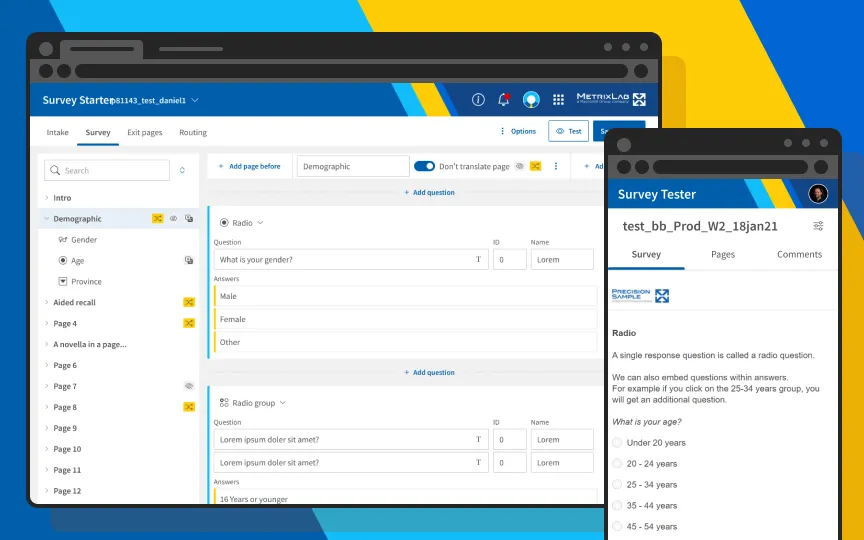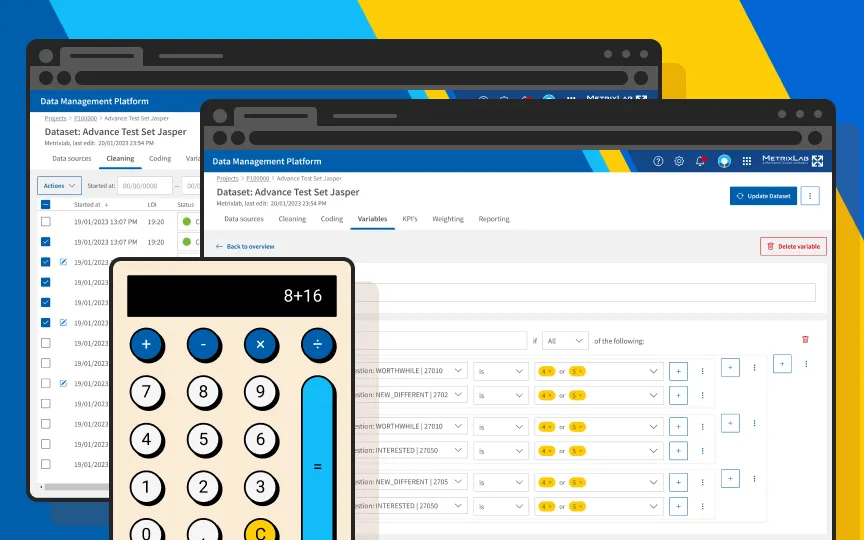Managing Large Survey Datasets
Metrixlab’s data management platform decreased research project turnaround time by creating a single source of truth for research managers.
Problem statement – The existing solution for data management was limited to online reporting within a dashboard platform. This constraint prevented the ability to generate offline reports or support other reporting formats outside the dashboard environment. The creation of offline reporting was therefore outsourced, increasing the research project turnaround time and often resulting in data inconsistencies.
Project goal – Decrease research project turnaround time and data quality by creating an intuitive tool for research managers to do survey data processing without needing external support, serving as a single source of truth.
Role – During the MVP stage I helped external designers implement our company design system. After MVP launch I supported an internal designer as a lead UX/UI designer. In the final stage, I conducted usability testing and designed the following feature improvements based on user feedback.
Cleaning Survey Data
Cleaning up survey response data (removing responses of bad quality, fixing mistakes) is a time-consuming process. Unfortunately, after the MVP phase it still required downloading the data and comparing answers in Excel, because only one question could be viewed at a time. The bad quality responses then needed to be marked one by one inside the new platform, as there was no batch functionality. This process is often outsourced requiring planning and managing taking several hours or even days.
I designed a new interface for data cleaning to address these problems. In the new interface design, multiple survey answers could be compared at once, reducing the need for downloading data. At the same time, multiple answers could be selected and marked for quality in batches. This way, researchers could handle data cleaning on their own and reduce project turnaround time.
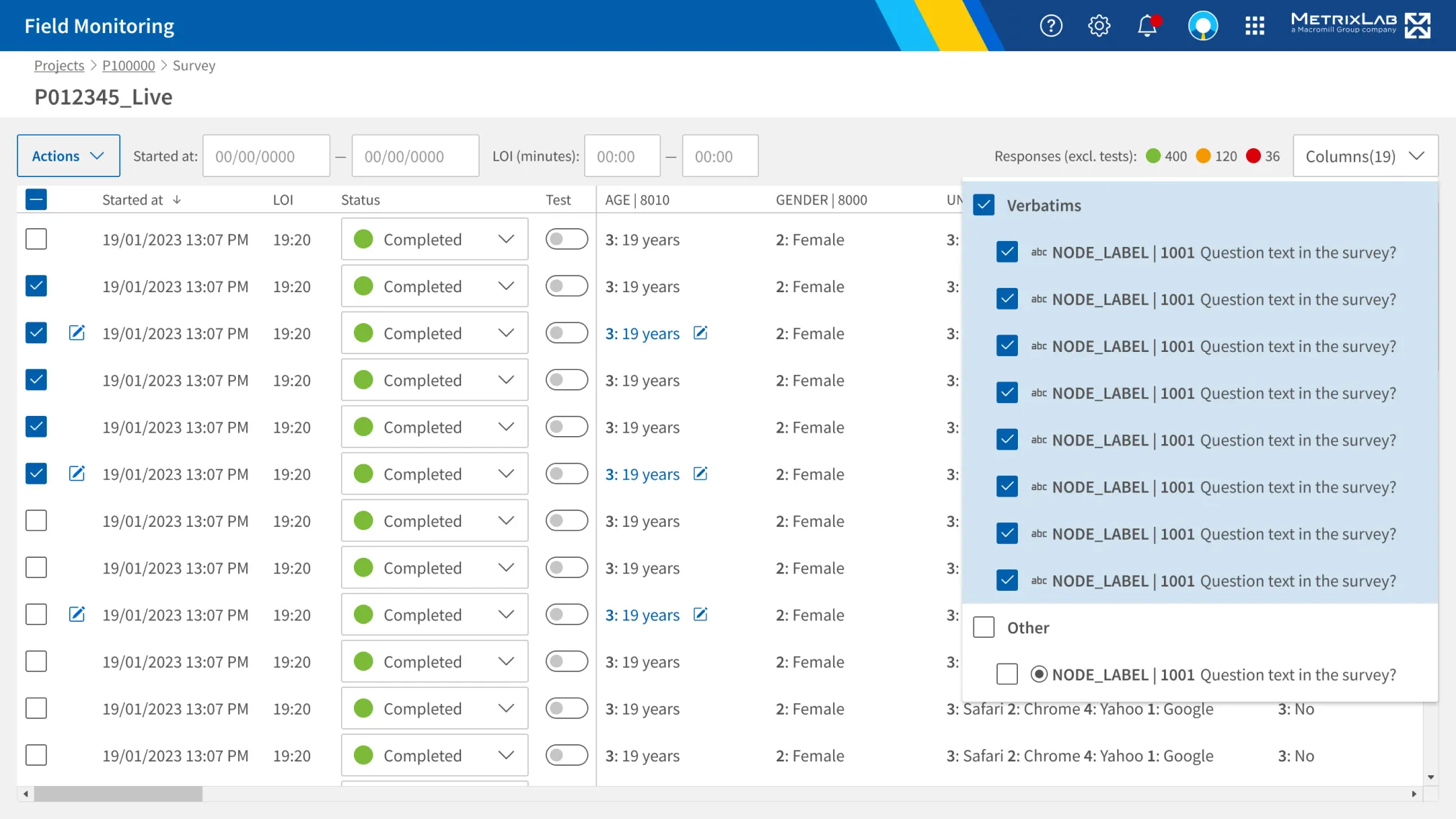
Additional Variable Functionality
In the platform MVP it was not possible to combine more than two survey questions or variables together. This prevented the creation of some types of KPI’s from being created online and required manual labor to be outsourced, leading to planning and managing taking multiple hours or even days.
I redesigned the variable interface to support a more wide range of variable types, including boolean, text, and number output formats, and more advanced conditions with support for grouping and if/else combinations.
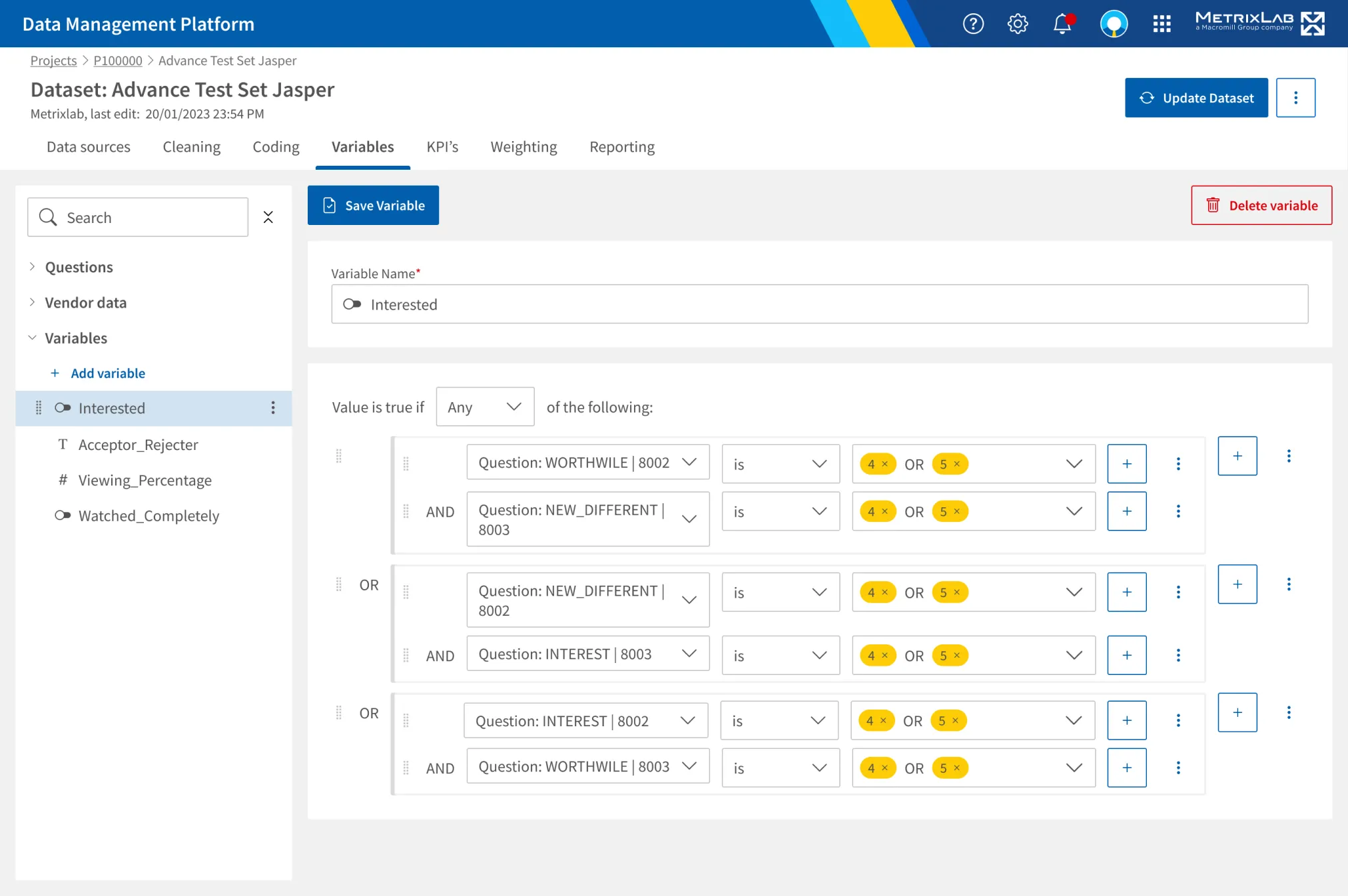
Improved Reporting Functionality
In the platform MVP it was only possible to store a single setup for exporting processed survey data. However, some use cases required multiple reporting setups, resulting in researchers having to create duplicated datasets. Furthermore, there was no preview of the report data provided. Researchers had to download the report data and open Excel, or they would risk errors in their data.
I updated the reporting tab interface with a new design, showing tested ad formats, benchmark types, overall sample size (number of respondents), and included report KPI’s and their related sample sizes. This way, researchers could quickly check the validity of their research and calculations, and decide to invite more respondents or close their survey without downloading any data.
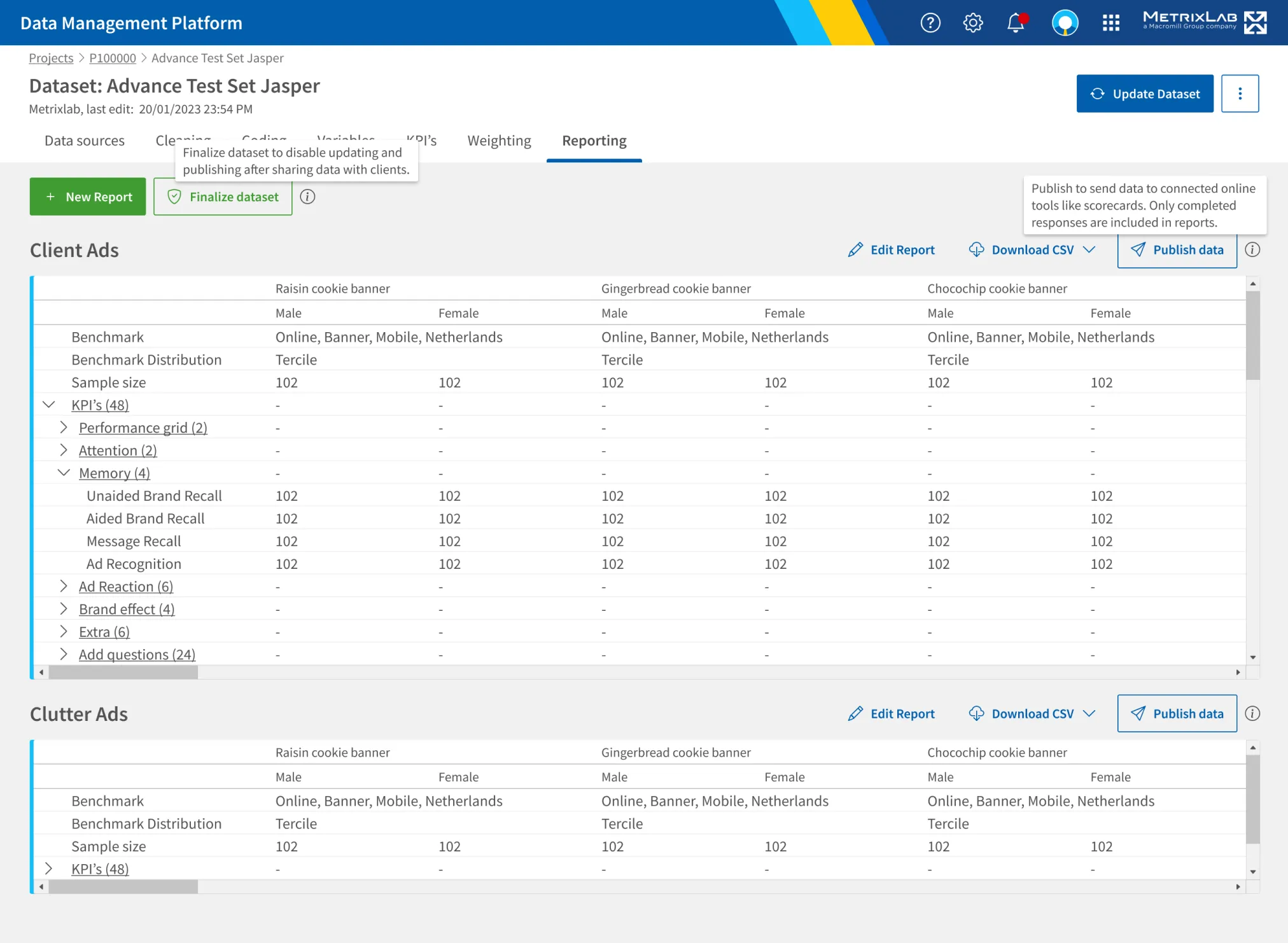
Results
At the end of 2023, I combined multiple analytics data sources to measure adoption of the platform. As it turned out, the platform had already been mostly adopted in the EU the year before. But during the following year, the platform had also been fully adopted in the rest of the world, apart from some high-value custom projects. From what people were saying about the platform, the high adoption rates were mainly due to how the platform saved users so much time. Along with other analytics, I shared these metrics with stakeholders to show them how the platform could be further improved.
